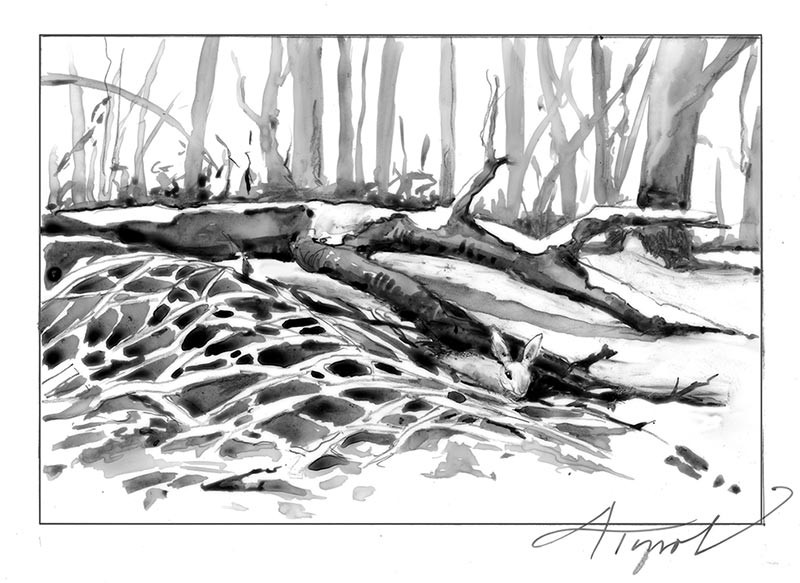
A guy down the road has been working in his woods for the last couple of years. He’s cleaning them up. And I mean cleaning. He cuts the underbrush. Takes out the dead trees, the downed logs, the dead branches.
Okay, I confess. The neatnik in me is envious. Part of me would like my 70 acres of woods to look like a park. But that’s the problem. A park is not a forest. And the forest is more than the trees. It’s an entire suite of complex systems, merging and interacting. An ecological orchestra in the woods.
Dead and dying wood, standing snags, rotting branches are more than Mother Nature’s litter. They’re an integral part of the forest symphony – what forestry types call “coarse woody debris,” or CWD for short.
“Without that debris our forests would not be what they are. Not just in terms of aesthetics, but nutrient capture and recycling and wildlife,” explained Andrew Whitman, a scientist with the Manomet Center for Conservation Sciences in Maine.
Snags provide nesting and resting spots for woodpeckers and other birds, squirrels and fishers. A rotting log on the forest floor is home to mosses, fungi, liverworts and lichens, salamanders and frogs, millipedes and centipedes, mice and voles. Piles of branches shelter snowshoe hares and hibernating bears.
Deadwood is critical to many species of fungi, which make their living breaking down the lignins and cellulose in wood and leaves. A dead tree will host a succession of species, Whitman said. “The fungi that use fresh dead logs are not the same as the ones that use logs that have been rotting for 50 years.”
Downed wood is also an important reservoir of bound-up carbon. “In older forests, 100 years or older, it can account for 22 tons per acre, or the weight of five cars. In younger forests it’s about 1 to 5 tons per acre or the weight of about one car. It’s not a trivial amount,” Whitman explained. That’s important because, in terms of climate change, carbon on the forest floor means less carbon in the atmosphere.
Carbon, nitrogen, calcium and the other elements that once made up a living tree are gradually released through the process of decay and then reused. It’s the forest fertilizing itself. In the meantime, those dead trees and branches littering the forest floor slow runoff in times of high rainfall.
Coarse woody debris also plays a crucial role in aquatic ecosystems, noted Whitman, providing nutrients to a stream. Downed wood also improves a stream’s “structure,” creating plunge pools, eddies, and places for fish to hide and stay cool.
In an intensively managed forest, the amount of coarse woody debris can decline over time. These days we often try to extract the last dime‘s worth of value from a harvest, chipping branches and tops for the biomass market. It’s not unusual for trees that once would have been left to die and then rot to get chipped instead.
“About 20% of bird species, 50% of mammal species, 44% of amphibian species, and 58% of reptile species in the Northeast use coarse woody debris for foraging, shelter, or other uses. And this is for the vertebrate species we know well,” said Whitman. “In an intensively managed forest, those species will struggle. While it looks great and it may be efficient in terms of fiber production, it can lead to a loss of biodiversity.”
The effects of that sort of harvesting may not show up for decades. But some studies indicate that over three rotations, nutrient levels in forest soils may start to drop if whole tree harvesting is used, he said. That would translate to slower tree growth and perhaps to a less complex forest that’s less able to cope with pests and diseases. And restoring a depleted forest isn’t economical, or easy, or fast. Dropping a few tons of 10-10-10 isn’t going to bring back those complex ecosystems or restore species that were lost. Only time would do that. Lots of time.
“Northern New England is fortunate to have its current levels of CWD,” said Whitman. “Similar forests in Europe have nowhere near the same amount of deadwood and so often lack species we still have. It is no wonder that tourists from Europe love to see our ‘wild” northern forests, where deadwood is a mark of wildness.”


Discussion *